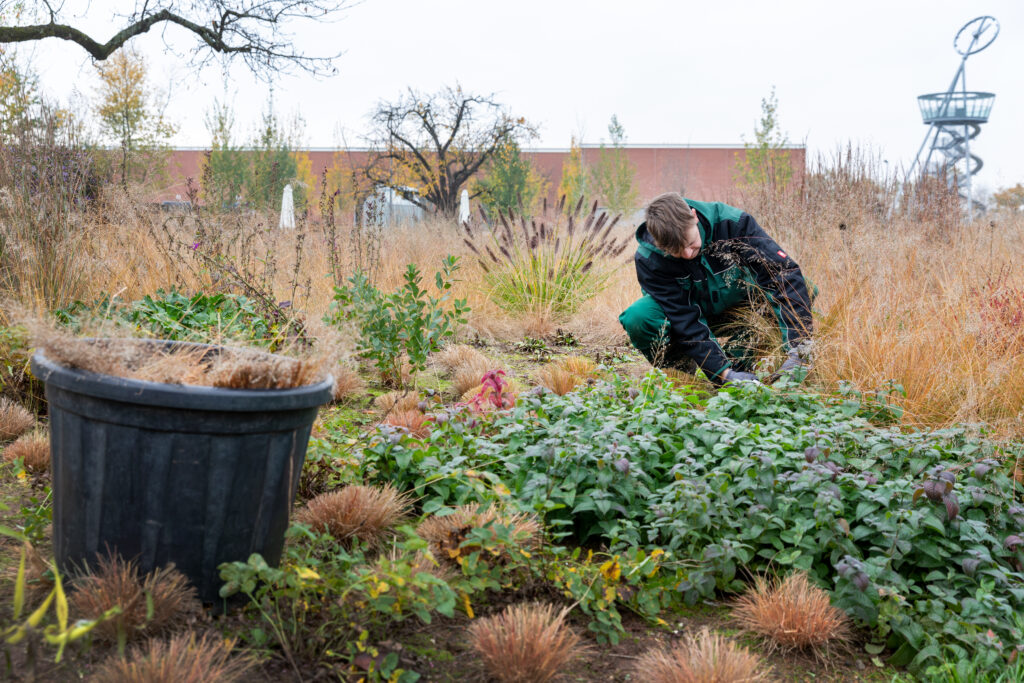Dutch designer Oudolf has created a beautiful 4,000m² perennial garden for the Vitra Campus in Weil am Rhein, Germany. The planting can be visited at peak bloom from this summer through autumn.
The landscape designer Piet Oudolf, considered a pioneer of a generation of garden designers, has left a part of himself in the Vitra Campus. He started his project last year and, a year later, it is already at its peak. Oudolf has used around 30,000 plants that give shape to his work, complementing the accompanying buildings. In addition, he always seeks to draw visitors’ attention away from the Vitra buildings, and toward the ground. “I want people to get lost in the garden, not walk through it,” the artist comments. He wants his parks to be an emotional, aesthetic and inspiring meeting place.

Visitors can stroll through the Vitra Campus walkways surrounded by flowers and trees.
Oudolf’s perfectly planned works are created with a set of plants and he seeks the balanced composition with them. With different strengths and weaknesses, and different flowering periods and life cycles. Offering a sensory experience throughout the year, maintaining its beauty both in the months of splendor and in the months of decadence.

Oudolf’s creations seek a sensory balance that stimulates the visitor’s five senses.
Despite his importance in the world of garden design, Oudolf is not considered the founder of any movement. In the late 1980s, they began to reflect and rethink a change in gardens. For the designer, the gardens were too decorative and consumed labor and resources. Instead, they turned to perennials, often self-regenerating plants, shrubs and wildflowers that had never been considered garden plants, and arranging them in unconventional ways. “Let others say what I am. To some, I’m just a gardener,” he comments.”

For the Dutch designer, the gardens of the 80’s involved an exaggerated consumption of resources, which is why his works use plants that are often self-regenerating.
During the first decades of development at the Vitra Campus, they did not rethink landscape design. In considering new forms, they were astounded by the public gardens created by Pier Oudolf in the last few decades. Works such as the one designed for Hauser & Wirth Somerset, the Serpentine art gallery or the Venice Biennale. In addition, its High Line in New York has transformed the view of gardening in urban settings. “It offers visitors a different experience; an experience that, moreover, changes continuously,” says Rolf Fehlbaum, chairman emeritus of Vitra.”

From the very first moment, Oudolf’s innate creativity captivated the Vitra Campus managers, who remarked that “it offers the visitor a changing experience depending on the time of the visit”.
Since last year, the Vitra Campus has also had bees. Hives located next to the Oudolf Garden, which in the near future will consist of six colonies. The hives are cared for by two beekeepers, and visitors can approach them, keeping a prudent distance.

Oudolf’s creations have previously been displayed at such distinctive events and venues as the Venice Biennale and the New York High Line.
Images courtesy of Vitra Campus




